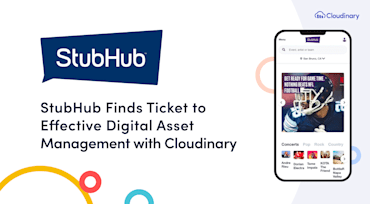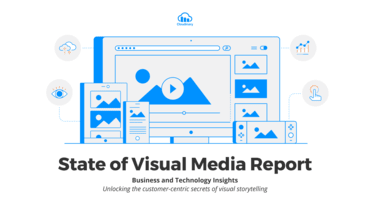A successful media publisher since 2004, Mediavine owns and runs popular sites like The Hollywood Gossip and Food Fanatic. In 2013, Mediavine expanded its service offerings to over 3,900 publishers to include ad optimization, video monetization, and influencer-marketing campaigns.

The explosion of rich media and the importance of that media to customer engagement is undeniable. Businesses that take advantage of this trend and try to solve some of the typical asset management pain points often end up using multiple point solutions. While these solutions might solve some problems in the short term, they ultimately lead to content and functional silos, inefficient workflows, and scale limitations.

If you are in a marketing or creative team at a large organization, you understand how complicated cross-team collaboration can be. Managing the entire workflow from creation until a developer delivers a new asset in your website or app (in its many variations for all devices, screen sizes, browsers, resolutions...) can be mind boggling.

Part 1 of this series on developer relations elaborates on why, for your products or technologies to gain traction and succeed, you must win over the endorsement and support from the techies—software engineers, developers, and designers—at existing or prospective customers. Subsequently, everyone benefits and the world is a happy place. Before doing that, it helps to understand the ins and outs of the so-called developer ecosystem, that is, the mantra for developers, their learning paradigm, and their opportunities and challenges.

Recent studies have shown that consumers are increasingly relying on online videos to shop around, learn about products, and make purchase decisions. Given that the online audience watches over 50% of videos on mobile devices, marketing through videos on eCommerce sites is a paramount strategy.

Since the early 1990s, I’ve been watching with interest and intrigue the rapid evolution of the software industry and its developers, which ushered in the Internet age in the meantime. I’d like to share with you my observations on that subject. Because of the breadth and complexity of the related topics, I’ll chronicle them in a series of posts, starting with this one.

I recently came across a tweet by organizer and developer advocate iChuloo by way of @JAMStackLagos on how to reduce the size of an image with only one line of code on Cloudinary.
Using @cloudinary in React and this sends the image size down by ~88% with no visible change in quality. Holy smokes!! pic.twitter.com/PT2b3785Lo

SVG format has been around forever, but until recently usage has been relatively low. However, following improved browser support, developers are rediscovering SVG, and taking advantage of its merits including:

eBay-owned StubHub, the world’s largest ticket marketplace for over 10 million sports, music, and theater events in 40-plus countries, serves buyers and sellers, desktop or mobile, with an image- and video-rich app that features interactive seat mapping, 360-degree seating views, and price and best-value recommendations. After acquiring Ticketbis in 2016 and subsequently expanding to over 40 additional markets, StubHub streamlined and automated image management with Cloudinary, netting significant time and cost savings while displaying first-rate images in over 30 viewports across devices.

One of the best things about working for Cloudinary is the amazing brands that trust us to manage tens of billions of images and videos. These companies span many industries, including retail, eCommerce, media, entertainment, travel and more. These brands understand that first impressions matter and that strong visual experiences engage users, create loyalty and drive revenue. So what can we learn from these brands and their loyal users?
